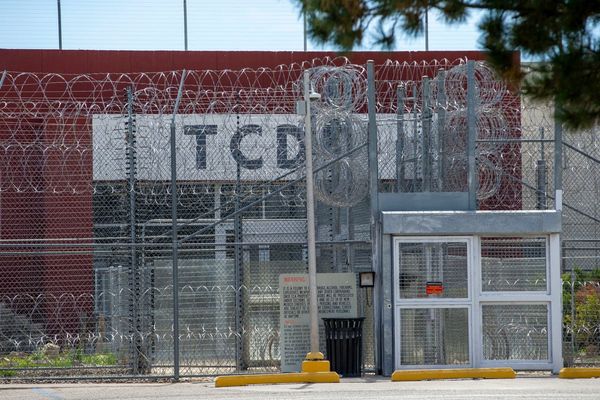
One in three Australian men has reported committing domestic violence, world-first research has found – and the same research has identified new ways to tackle it.
The Australian Institute of Family Studies found fostering affectionate relationships between sons and fathers (or father figures) was associated with reducing the risk of intimate partner violence (IPV) by as much as 48%.
The AIFS Ten To Men Australian Longitudinal Study on Male Health is the largest of its kind. It started tracking about 16,000 boys and men in 2013-14, and in 2023-24 added another 10,000 men to the database.
The definition of intimate partner violence includes emotional as well as physical abuse.
Having good social supports is another protective factor, according to the AIFS report based on the study’s robust data up to 2022. Men who reported high levels of social support all the time in 2013-14 were 26% less likely to report committing IPV by 2022.
Mental health issues such as depression can increase the incidence of violence. Men with moderate or severe depressive symptoms in 2013-14 were 62% more likely to report committing IPV by 2022, while those with mild depressive symptoms were 32% more likely. Those who had experienced suicidal thoughts, plans or attempts were 47% more likely.
The report said it was “essential to acknowledge that only a minority of men experiencing depressive symptoms will later use [IPV]”.
Ten to Men respondents were surveyed about “their use of, and experience of” IPV, and invited to provide yes/no answers to questions including:
Have you ever behaved in a manner that has made a partner feel frightened or anxious? (emotional-type abuse)
Have you ever hit, slapped, kicked or otherwise physically hurt a partner when you were angry? (physical violence)
By 2022 35% of men answered yes to one or both of those questions. About 9% reported physically abusing their partner.
The study focused on mental health and social and familial support as factors in IPV, and did not look at other known factors – for example, masculine norms and alcohol and drug use were noted as “important” but not within the study’s scope. While the report noted Aboriginal and Torres Strait Islander men have been identified as a priority group within the National Men’s Health Strategy 2020–2030, they were not analysed as a separate group in the report, because of small sample sizes.
Ten to Men program lead, Dr Sean Martin, said focusing on men’s mental health was good in itself, but he said the research also suggested a broader benefit for their families and communities.
He said, overall, a “really complex mix of factors” influenced the chances someone would become a perpetrator. “It really is this Gordian knot of individual relationships, society, cultural and attitudinal factors,” he said.
He said the study aimed for “a detailed look at some key factors”, as well as providing estimates.
“For us, that was things like mental health and suicide.
“It was also protective factors: we were particularly looking at social connection and paternal affection, because a lot of previous work has been on parental affection but that usually meant maternal.”
Micaela Cronin, Australia’s domestic, family and sexual violence commissioner, said the findings should help inform evidence-based policies.
“If we are going to end gender-based violence we need to understand more about pathways in to violence, what are protective factors and what are pathways out,” she said.
Cronin said it was “powerful” to see the results about “affectionate, close relationships with fathers and father figures” and young boys.
“But we need to unpack that and understand it more,” she said.
“What are the elements of it that really lead to strong role models?”
In 2013-14, about one in four men aged 18 to 57 (24%) in the study had reported committing a form of IPV, according to the report. By 2022, that had risen to one in three. When that data is extrapolated to Australia’s population, it suggests each year, on average, about 120,000 men are committing IPV for the first time.
AIFS director, Liz Neville, said that showed clearly the “devastating consequences” of delays in effective interventions.
“Each act of violence harms individuals, families and communities. We hope these disturbing numbers provide the impetus for further action by governments at all levels, underpinned by evidence,” she said.
The federal government pledged in 2022 to end family and domestic violence in one generation.
Australia’s National Plan to End Violence against Women and Children 2022–2032 has been criticised by some people for its emphasis on gender equality as a primary prevention method, over intervention on specific risk factors.
After an uptick in alleged intimate partner homicide, the government convened a panel of experts last year to do a “rapid review” of prevention approaches. In response to that, and a review of legal assistance, Anthony Albanese announced a $4.7bn, five-year plan to deal with what he has called the “national crisis” in domestic violence.
The new social services minister, Tanya Plibersek, said the AIFS findings were “concerning, but sadly not surprising”.
“It’s critical that we look at the factors that might lead to violence so we can make sure we’re funding programs that stop it at the start,” Plibersek said.
“To end domestic and family violence we need to invest in the frontline services that help people and keep them safe, but we also need to stop the behaviours that lead to it.”
The study’s findings will be used in briefings to governments and policymakers.
“I will be raising it in every forum I can to ensure attention is paid to it,” Cronin said.
Martin said there were “a lot of things we can do now”, but he said also that “the broader cultural shifts will take time”.
• In Australia, support is available at Beyond Blue on 1300 22 4636, Lifeline on 13 11 14, and at MensLine on 1300 789 978. The national family violence counselling service is on 1800 737 732.
• The main image on this article was changed on 3 June 2025 to better reflect the story.







